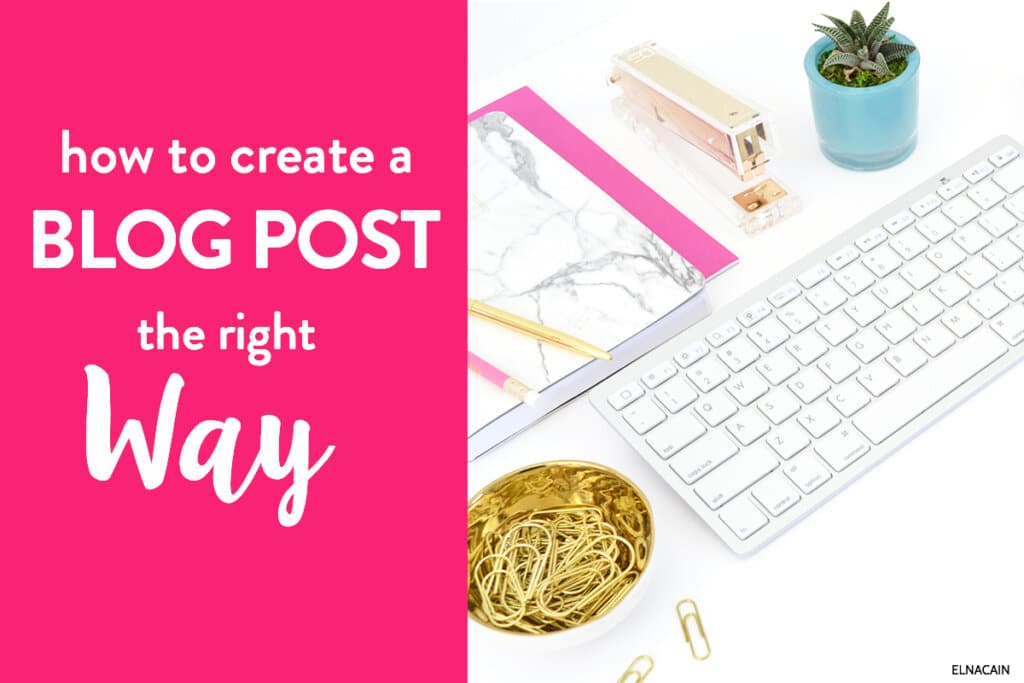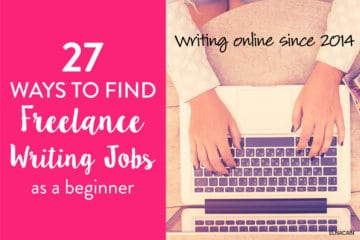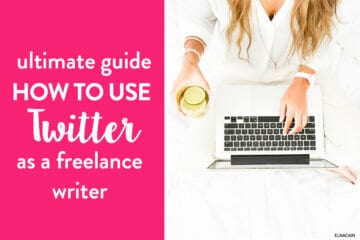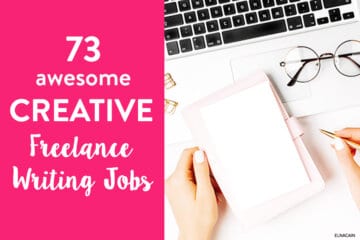Listen up bloggers and freelance writers, it isn’t enough anymore to just have good content on your blog.
Don’t get me wrong – having a well-written, interesting and engaging blog post is important, but it isn’t enough.
No, what you want is for people to notice your post. You want them to click on the link, and if they can get past your headline and read your post, they might even think about it, tweet it, bookmark it, share it and pin it.

Your blog isn’t doing you any good if no one’s reading it. So, how can you make people notice your blog post?
Let’s think about hosting a dinner party – besides the dishes and your outfit, what is the most important element of your party?
It’s the presentation. From the dinner plates you specifically choose, down to the way the appetizers look on the platter, knowing how to arrange your home for a kick-ass dinner party helps to create a better atmosphere for your party guests.
This is no different for your blog. You need to be be able to serve up your blog post the right way.
This ensures your audience will enjoy it, share it with other people and even tell you how much they enjoyed it.
So, in all my efforts of learning how to write for an online audience, I’ve picked up a few things on how to create a blog post that is soo sweet and enticing, that I get shares, Likes, and comments.
Here is my 12-point checklist for better blog posts.
1. Have a Very Pinnable Image
If you’ve been reading my blog for some time, you might notice that I changed my feature images. I used to size my images in more of a horizontal shape, but after realizing the power of Pinterest in driving more traffic, I opted to go with vertical images.
Since most of Pinterests’ users use mobile devices for viewing, having vertical images makes more sense.
So, to get the most out of Pinterest, it’s best to have at least one pinnable image on your blog post. It doesn’t have to be your feature image.
Some bloggers put it at the end of their blog post while other bloggers (like I do on Twins Mommy) put their pinnable image in the intro of their blog posts.
Other ways to attract more pins and re-pins are:
- To use a very attractive image. There are many creative commons licensed photos available on the web. You’ll find that the majority of them are of excellent quality and resolution. Many of these images are royalty free without attribution required. My favorite sites are: Pixabay, Split Shire, and Gratisography
- To add text on your image. Every feature image I have on my blog has a text box. Having your title on your image makes it more appealing and easier to read when it’s previewed on a smartphone. But, before you go change all your images to include a text box, please try to avoid the 8 Types of Visual Diarrhea That Plague DIYers.
- Add an enticing description. Treat this like sales copy. Make pinners want to click on your pin.
2. Optimize Your Image
Images play a huge part in creating the right atmosphere for your blog, brand and your writing. But, how many of you are optimizing your images for the web?
What I mean is, having images that coincide with your blog and that load quicker on your website.
So, how can you optimize your image, without sacrificing the size of your photo? After all, having a large feature image for your blog post is just oh so much better for Likes, shares, comments and traffic. Here are two ways I format my images.
Use Images That Take Up the Entire Width of Your Column
In WordPress, you have the option of using a thumbnail, medium size, large size, full size, or custom size image.
Depending on my image size, I either use a large or full size for my featured image on my blog posts. This ensures that my image takes the entire width of my column.
It’s a blogging fact – small images just don’t look good.
Reducing the File Size to Make Your Page Load Faster
Most high-resolution images that I grab from websites, are huge. Take my featured image on this post: originally, it was 5472 wide by 3648 high.
If I were to save this as a JPG, it would be a whopping 4.7M. If you don’t know, that’s freaking huge and would take a long time to load on a slow cellular data plan.
To reduce the file size, I first resize the image in PhotoShop. But, usually, this is still too large so I always compress it even more. There are several places that quickly compress your JPG or PNG images. I personally use the free version of Kraken.
What I like about Kraken, is you can compress both PNG and JPG images. Some other places are tinypng.com or tinyjpg.com.
So, after compressing my featured image on this blog post, it is now 1179 wide by 1718 high and only a measly 371 KB.
Doing this will please your readers who don’t have to wait for your visually attractive image to load.
3. Link to Other Posts on Your Site
It’s always a good blogging practice to link to other relevant articles or resources on your site. This will keep readers on your site longer, making them more invested in what you have to say.
This helps establish you as an authority in your niche, when you can provide helpful content to your readers.
Interlinking also does well for SEO purposes. According to Daniel Vassiliou’s guest post on Problogger,
The main goal of interlinking your blog posts is to have search engines be able to easily crawl and index all of your pages, as well as see the structure of your site. A clean structure makes it so all of your pages get indexed, which means it can match them to search queries.
Since Google strives to give the best experience as well as the best content for queries to its searchers, the quality of your site layout comes into play when rankings are determined.
This basically means, the more you interlink, the better chance your blog will rank for a search query. Building anchor text links also helps turn casual readers into loyal readers.
So, entice them by adding internal links so that readers can refer to your other awesome and helpful blog posts.
4. Use Bullet Lists
- People lose focus when they read big blocks of text
- Break it up with bullets or numbered lists
- This makes it easier to read your blog post and pick out the important information easily
5. Ask Your Readers Questions
When writing your blog post, do you ask your readers questions? (see what I did there…)
I find that it helps draw in your readers and also gives them an opportunity to “join” in on the conversation. If all I did was write my blog post without even considering my readers’ intentions or thought process, I don’t think I would have much engagement happening on my blog.
If you can tell, I write my blog posts as if I am talking to a friend of mine. I keep it laid back and conversational.
I want to make sure that my readers are engaged and what better way to do this than to ask questions in my blog post?
6. Create Evergreen Content on Your Blog
If you want readers coming to your blog for a long time, it’s best to start creating content that will stand the test of time.
Evergreen content is relevant content for your readers and it won’t lose relevancy or interest over time.
Now, don’t get me wrong – writing about the latest trends or what’s in season will get you more traffic, but it’s short-lived.
To continually draw more readers to your blog, provide content that is timeless. For my blog, since I mostly talk about freelance writing, blogging and being a WAHM, these topics will never go out of style and can be evergreen.
Here are some other ways to boost your evergreen content on your blog:
- Incorporate more how-to posts (How to Land a Client with a Blog)
- Write posts that are universal (Find Out the One Thing That Can Ruin Your Freelance Writing Career)
- Write beginner topics to help newbies out (Freelance Writing Jobs for Newbies: Landing Your First Client)
For more help, check out HubSpot’s article on 4 Useful Tips For Creating Evergreen Content.
7. Break Up Your Paragraphs
Did you know that only 16% of readers actually read your entire blog post? People are busy and don’t have the time to sit and read every word (although I’m sure bloggers curse at this statistic).
But, you can increase the chances of people reading your awesome blog post by simply breaking up your paragraphs.
Make a sentence its own paragraph. Heck, throw in one word sentences! When you mix it around, you create white space, making it much easier for scanners and readers to devour your content.
Other ways to format your blog post for easy reading include:
- Using sub-headings. People tend to read only the sub-headings of a blog post, so make them enticing and informative so that by chance they read what’s under the sub-heading.
- As mentioned before, include bullets and numbered lists in your blog post
- Don’t make paragraphs longer than 3 sentences. This tends to look like a big wall of text on most blogs, so stick to 1-2 sentence paragraphs.
8. Have an Eye-Catching Headline
I’ve mentioned this before, but up to 80% of your readers won’t even bat an eye at your blog post if it doesn’t have an attention grabbing title.
So, get your creative juices flowing, put on your copywriting hat, and start coming up with some great headlines. Your headlines should be enticing enough to make people click on your link and want to learn more about it.
I generally write headlines for social media, but occasionally will throw in SEO type headlines. Lately, I’m doing the latter and seeing if I’ll get the same amount or more of traffic.
9. Try to Solve a Problem (Or Teach Something New)
I find that the best blog posts are the ones that point out a problem and how to fix it. Most of my blog articles stem from a problem a freelance writer, blogger or WAHM may have. For example:
- Freelance Writing Jobs for Newbies: Determining Your Rates
- Stuck with Lifeless Images on Your Blog? Dress Them Up with 4 Enchanting Ideas
- 5 Easy Ways for a Freelance Writer to Create Work-Life Balance
Readers want answers, so why not give it to them?
Other share-worthy blog posts are ones that teach something new. I don’t have as many of those types of articles, but plan on having more step-by-step posts on common issues relevant to my audience in the future.
10. Make Your Blog Post Personal
Since becoming a freelance writer I’ve read a lot of blogs. I keep going back to the same blogs because they are personable.
These posts are easily relatable and are written as if they are directed to me. Some great blogs that I frequent are:
Some people may not want to divulge all their personal information, but there are ways to be personal without giving away too much personal information:
- Include real life activities on your blog
- Own up to mistakes or failings
- Use a conversational tone
- Spotlight a subscriber or reader
Above all, be true in your writing. Don’t glam it up or pretend. People quickly notice if you aren’t telling the truth. So own up and make your writing speak.
11. Have a Great Hook
Having a great hook goes hand in hand with having an eye-catching headline. After a person reads your headline, how do you get them to keep reading?
A great hook can draw a reader in and make them want to read the rest of your blog post. Great introductions have an emotional quality to them.
They may spark interest, fear, surprise or humor for the reader.
So, how do you write a compelling introduction? Many people start off with a question. This immediately draws the reader in because people automatically gravitate towards questions.
They internally answer them and are interested to know if their answer is “correct.”
For my post, 7 Guaranteed Ways to Write Faster and Get More Clients, I started with this question:
If you’re a freelance writer or blogger, online writing is something you know you’re good at and I’m sure you’re confident about it, right?
Here, I’m challenging my readers’ confidence level. Do you think you’re a good freelance writer? This draws from a universal question everyone asks of themselves, am I good at what I do?
Another captivating hook is to tell a story. This can be a true story or a hypothetical one. Take my post, Freelance Writing Jobs for Newbies: 10 Questions to Ask a Prospective Client. I start out this post with a hypothetical story:
Has this happened to you?
You sit at your desk and open your inbox to see the flood of new emails pop up. You notice a reply from a pitch you sent out not too long ago, asking for a phone interview.
You smile, give yourself a pat on the back and begin to research everything and anything about this prospective client’s business.
When it’s time to interview the client, you seem to have forgotten what to say or what to ask.
Before ending the conversation, you feel there’s no way the client is going to hire you and you hang up your cell phone, crushed at ever thinking you could’ve pulled the interview off.
If you are a new freelance writer, landing your first client is exciting, but nerve racking.
I tell a story as a way to connect with my audience. I’m sure many freelance writers have had this happen to them before. By leading with a story, readers will want to finish it, making it more likely they will read your blog post.
Other ways to draw your readers in after they read your headline is to include:
- A statistic (“This is a great time to be a freelance writer. According to the U.S. Bureau of Labor Statistics, there’s been a 300% demand increase for writers in the last 10 years.”) * How Do I Set Myself Apart From Other Freelance Writers
- Let them in on a little secret (“I’m going to let you in on a little secret — so come closer and listen carefully. Ready? I almost ruined my freelance writing career before it even took off.”) * Find Out the One Thing That Can Ruin Your Freelance Writing Career
- Get them to guess at what you are talking about. (“You may have worked with one or heard of one before. They often ruin your day, week or month.”) * Freelance Writing Jobs for Newbies: Writing a Crystal Clear Contract
12. Include a Call to Action
A blog post isn’t a blog post unless it has a call to action (CTA). I mean, the only reason people have a blog is so other people read it and take action. And people read your blog to learn about you and what you have to say.
So, to include your audience in your blog post, give them something they can take away from your blog post.
In business, a CTA usually is an incentive to turn a viewer into a customer. Maybe it’s to sign up to a newsletter or buy a product.
For some bloggers, a CTA may just be a question to start an engagement in the comments. For example, you could ask your readers, what are some other ways you find jobs? Is there one place you always go to for scoring gigs?
When you include a CTA at the end of your blog post it helps jump start the comments.
Conclusion
There you have it. Twelve sure-fire ways to write an awesome blog post the right way so that people will read, share, Like and come back time and time again.
Now you don’t have to use all 12 of these tips, but after you’ve been blogging for a while, you’ll find most of them will come naturally when you start writing.
For example, formatting my blog post to have more white space and to incorporate bullets and lists is the norm for me every time I write a post.
So, share with me what tip you found most useful for writing awesome blog posts. And let me know what other things you do to make your post the best.
Sharing is caring! Please Pin this post.




31 Comments